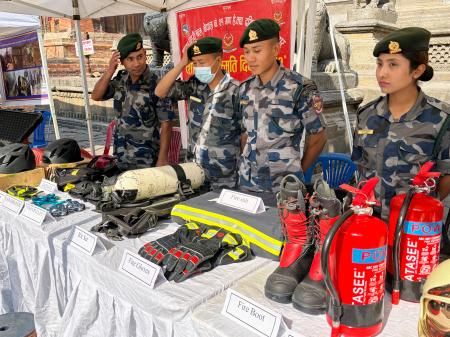Nepal's Earthquake Scars: Progress and Challenges Five Years On
Nepal's devastating 2015 earthquake, measuring 7.8 on the Richter scale, left an indelible mark on the nation. While significant progress has been made in recovery and reconstruction, substantial challenges remain. This article explores the progress Nepal has achieved, the obstacles it continues to face, and the path forward for resilient rebuilding.
Progress Made: A Look at Reconstruction Efforts
Five years after the earthquake, Nepal has demonstrated remarkable resilience. The international community's support, coupled with the unwavering spirit of the Nepali people, has fueled considerable progress:
- Housing Reconstruction: A significant number of homes have been rebuilt, particularly in rural areas, thanks to government programs and international aid. The National Reconstruction Authority (NRA) played a crucial role in coordinating these efforts, providing grants and technical assistance to affected families. However, the pace of reconstruction remains uneven across different regions.
- Infrastructure Development: Roads, schools, and healthcare facilities damaged in the earthquake have been repaired or rebuilt, although the process is far from complete, especially in remote mountainous regions. Improved infrastructure is crucial for long-term economic recovery and improved access to essential services.
- Economic Recovery: While the earthquake dealt a major blow to Nepal's economy, the subsequent recovery efforts have seen positive signs. Tourism, a vital sector, has gradually rebounded, although it continues to face challenges. [Link to article about Nepal's tourism recovery]
- Disaster Preparedness: The earthquake highlighted the need for improved disaster preparedness and response mechanisms. Nepal has since invested in strengthening early warning systems and enhancing community-based disaster risk reduction initiatives. [Link to article about disaster preparedness in Nepal]
Challenges that Persist: Obstacles to Complete Recovery
Despite the progress, significant challenges hinder Nepal's complete recovery:
- Funding Gaps: While international aid played a critical role, funding gaps continue to hamper reconstruction efforts. Securing sustainable and long-term funding remains crucial for completing the reconstruction process.
- Bureaucratic Hurdles: Navigating bureaucratic procedures and obtaining necessary permits for reconstruction remains a significant obstacle for many affected communities. Streamlining these processes is crucial for accelerating progress.
- Geographical Constraints: The mountainous terrain of Nepal poses significant logistical challenges, particularly in reaching remote and isolated communities. This makes reconstruction efforts more complex and costly.
- Political Instability: Political instability and changes in government can disrupt reconstruction efforts and lead to delays in implementing policies and programs. A stable political environment is crucial for effective and efficient reconstruction.
- Addressing Seismic Vulnerability: Many structures rebuilt are still vulnerable to future earthquakes. Implementing stringent building codes and promoting earthquake-resistant construction practices is vital for long-term resilience.
The Path Forward: Ensuring Sustainable Reconstruction
Nepal's earthquake recovery requires a long-term, sustainable approach that addresses the remaining challenges. This includes:
- Strengthening Institutional Capacity: Improving the capacity of government agencies involved in reconstruction is essential for better coordination, efficient resource allocation, and transparent project implementation.
- Promoting Community Participation: Engaging local communities in the planning and implementation of reconstruction projects is critical to ensuring that the needs of the affected populations are met.
- Investing in Education and Skills Development: Investing in education and skills development can improve livelihoods and create economic opportunities, particularly in rural areas.
- Improving Transparency and Accountability: Ensuring transparency and accountability in the management of reconstruction funds is essential to build public trust and ensure efficient resource utilization.
Conclusion:
Nepal's journey of recovery from the 2015 earthquake is a testament to its resilience. While significant progress has been made, considerable challenges remain. By addressing these challenges through a comprehensive and sustainable approach, Nepal can ensure a future built on resilience and lasting recovery. Continued international support, coupled with strong political will and community engagement, are key to completing this vital task. Let's continue to support Nepal in its journey towards a brighter future.
Keywords: Nepal earthquake, 2015 Nepal earthquake, Nepal reconstruction, earthquake recovery, Nepal disaster relief, National Reconstruction Authority (NRA), Nepal earthquake damage, Nepal earthquake rebuilding, sustainable reconstruction, disaster preparedness, earthquake-resistant construction.
